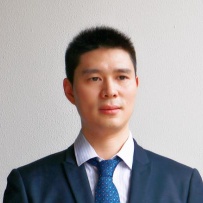Quantum and Classical Artificial Intelligence
A special issue of Algorithms (ISSN 1999-4893). This special issue belongs to the section "Evolutionary Algorithms and Machine Learning".
Deadline for manuscript submissions: 31 July 2024 | Viewed by 1023
Special Issue Editors
Interests: quantum communication and information security; quantum blockchain and privacy protection; quantum algorithm and artificial intelligence; basic problems of quantum mechanics and quantum gravity
Special Issues, Collections and Topics in MDPI journals
Interests: quantum machine learning; quantum deep learning; quantum generative adversarial network; federated learning; quatum image encryption; quantum image watermarking
Special Issue Information
Dear Colleagues,
Quantum artificial intelligence (QAI), an interdisciplinary field that combines quantum information technology and artificial intelligence, has emerged as a promising avenue for harnessing the power of quantum computing in the NISQ era. In recent years, QAI has experienced significant growth, demonstrating its prospective advantages over its classical counterpart. Concurrently, classical artificial intelligence (CAI) has achieved remarkable breakthroughs, driving advancements in the field.
This Special Issue seeks to compile cutting-edge research articles that showcase the latest theoretical developments and experimental innovations in both quantum artificial intelligence and classical artificial intelligence. We welcome submissions that address various areas, including quantum machine learning, quantum deep learning, quantum generative adversarial networks, quantum graph machine learning, deep learning, federated learning, computer vision, generative models, natural language processing, and graph neural networks. By bridging the gap between theory and practical applications, this Special Issue aims to emphasize the significant strides made in QAI and CAI, garnering attention from researchers and practitioners alike.
Dr. Hua-Lei Yin
Prof. Dr. Nan-Run Zhou
Guest Editors
Manuscript Submission Information
Manuscripts should be submitted online at www.mdpi.com by registering and logging in to this website. Once you are registered, click here to go to the submission form. Manuscripts can be submitted until the deadline. All submissions that pass pre-check are peer-reviewed. Accepted papers will be published continuously in the journal (as soon as accepted) and will be listed together on the special issue website. Research articles, review articles as well as short communications are invited. For planned papers, a title and short abstract (about 100 words) can be sent to the Editorial Office for announcement on this website.
Submitted manuscripts should not have been published previously, nor be under consideration for publication elsewhere (except conference proceedings papers). All manuscripts are thoroughly refereed through a single-blind peer-review process. A guide for authors and other relevant information for submission of manuscripts is available on the Instructions for Authors page. Algorithms is an international peer-reviewed open access monthly journal published by MDPI.
Please visit the Instructions for Authors page before submitting a manuscript. The Article Processing Charge (APC) for publication in this open access journal is 1600 CHF (Swiss Francs). Submitted papers should be well formatted and use good English. Authors may use MDPI's English editing service prior to publication or during author revisions.
Keywords
- quantum artificial intelligence
- quantum algorithms for machine learning and optimization
- quantum machine learning
- quantum graph machine learning
- quantum deep learning
- quantum generative adversarial network
- computer vision
- deep learning
- federated learning
- generative model
- natural language processing
- graph neural networks






